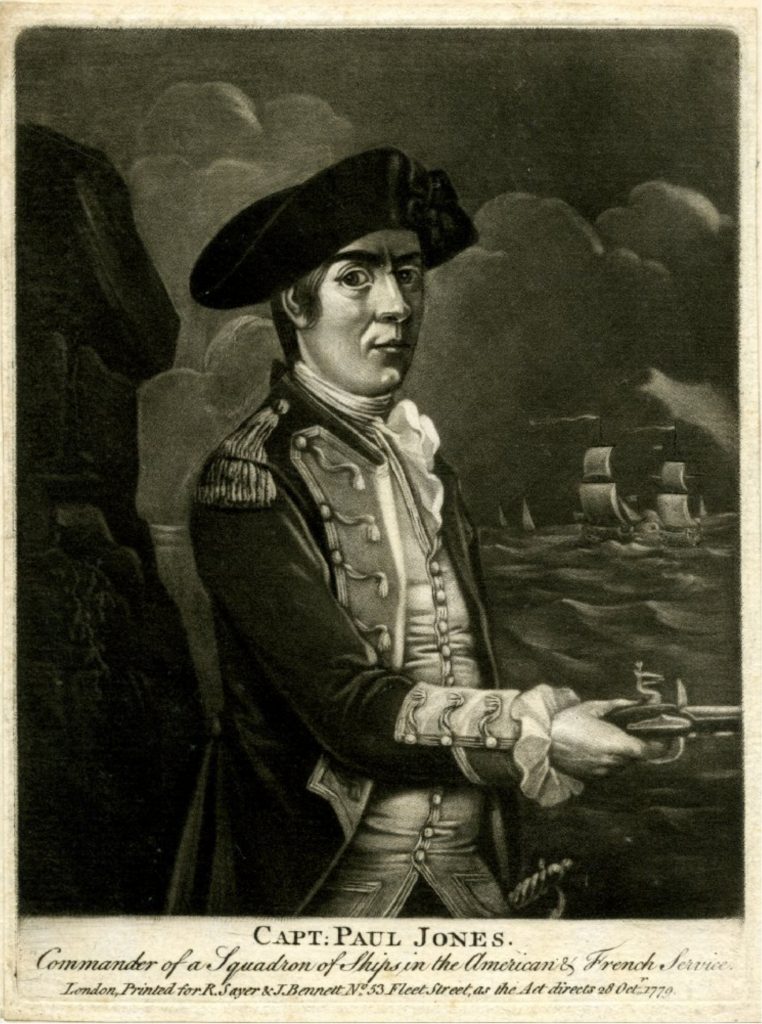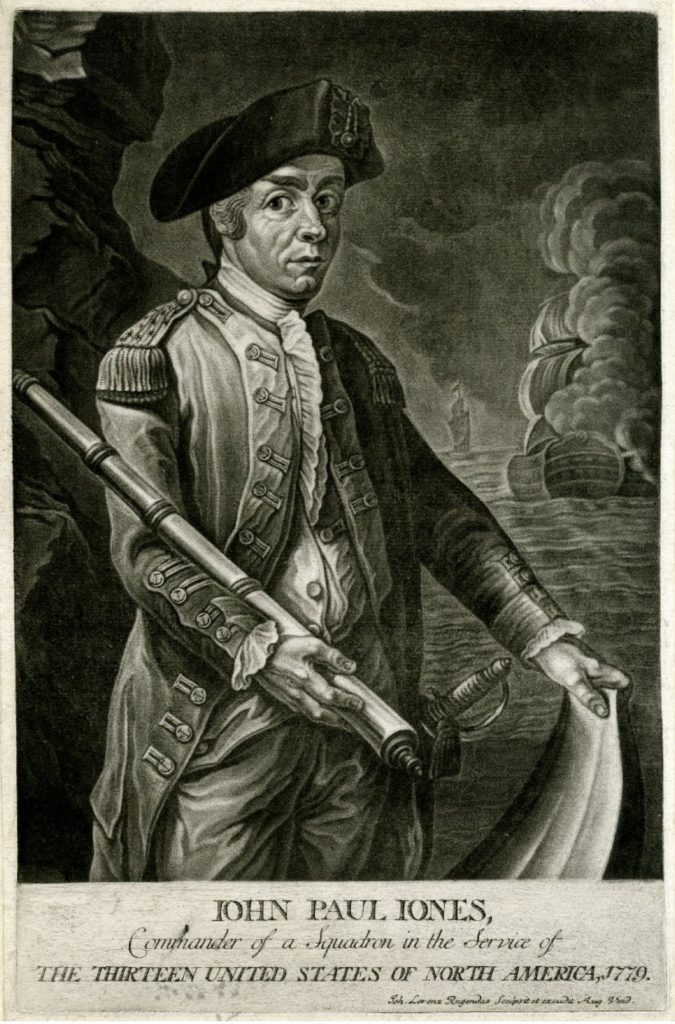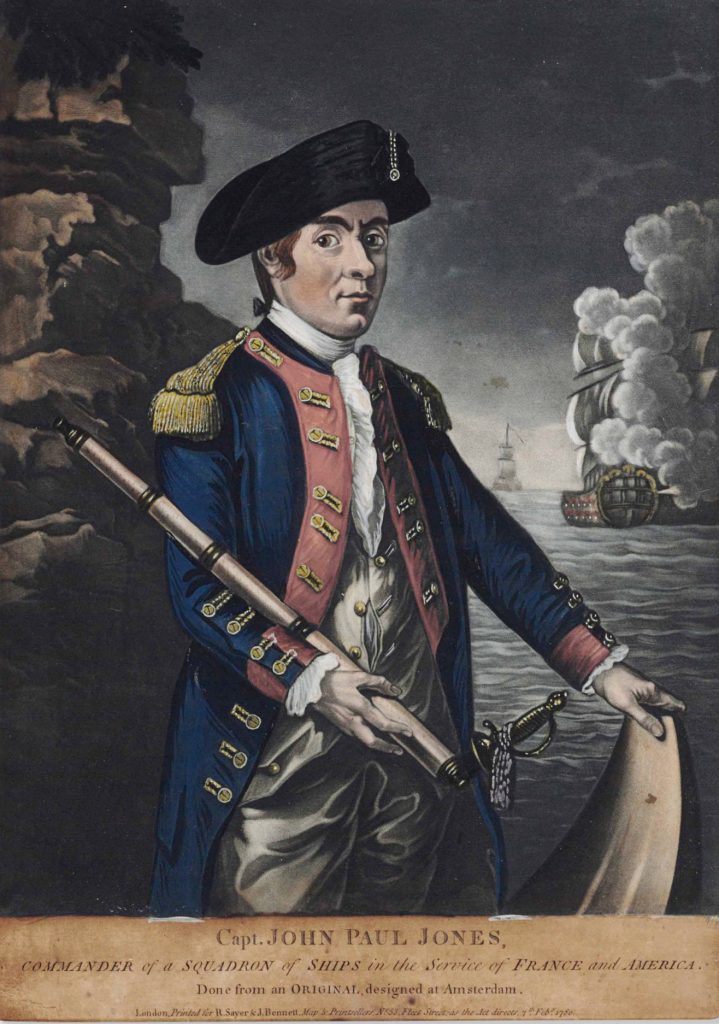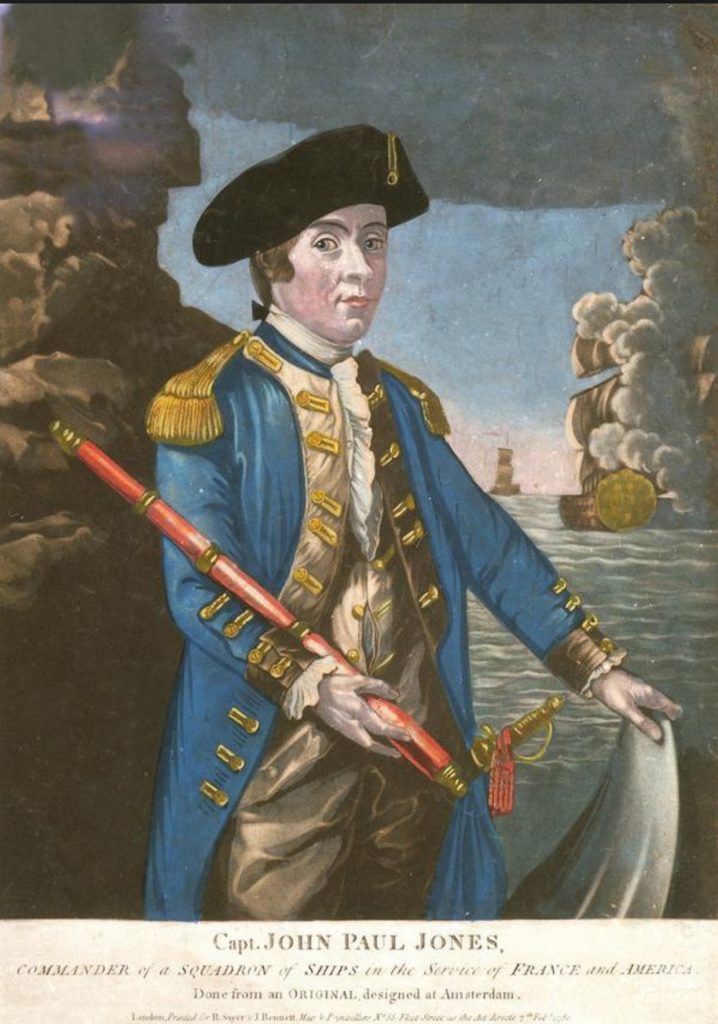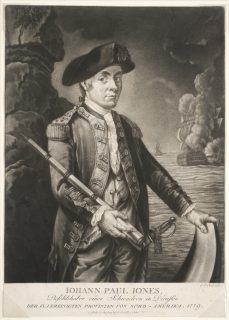
John Paul Jones was at the peak of his fame when this portrait was published in Europe. The publication history of the portrait offers an instructive view of the operation of the international trade in prints of military and political figures.
The English engraver Richard Brookshaw (1736-ca. 1804) produced and sold the first version of this image, a mezzotint, in 1779. Brookshaw began his career in London but moved to Paris about 1773. By 1779 he was working in Brussels and Amsterdam, and engraved and sold this image of Jones in Amsterdam within a few weeks of Jones’ triumph over HMS Serapis, which made Jones a celebrity in officially neutral Holland.
After the battle, Jones sailed the captured Serapis to Holland. Leaving Serapis in the sheltered roadstead of the Texel, Jones went south to Amsterdam, where he arrived on October 7. Brookshaw may have based his portrait on a glimpse of Jones in the city, but no evidence that Jones posed for him has been found. In a very general way, the portrait resembles the sculpture of Jones later created by Jean-Antoine Houdon, which is probably the most accurate likeness of him.
The composition conforms to a convention of eighteenth-century naval portraits, in which the subjects are often portrayed standing on a coast with their vessels in the background, or, incongruously, with the battles in which they secured their fame raging offshore. Brookshaw’s composition bears a strong resemblance to the composition of Thomas Gainsborough’s portrait of Commodore (later Vice Admiral) Augustus John Hervey, earl of Bristol, completed in 1767-1768 (now owned by the British National Trust and displayed at Ickworth), although there is no reason to believe that Brookshaw was inspired by it.
Within days, Brookshaw’s print made its way to London, where it was adapted by Bennett & Sayer for the British market and published with the date October 28, 1779. This first Bennett & Sayer mezzotint substitutes a menacing cocked pistol for the spyglass in the Brookshaw original, and simplifies the naval battle in the background. The unnamed engraver lacked Brookshaw’s skill and probably worked quickly to produce a plate while British interest in Jones was high. The head is too large, the perspective flat and the uniform details poorly rendered when compared to Brookshaw’s work.
Far better copies of Brookshaw’s original were produced for the international market in the Bavarian city of Augsburg, a center for the production of fine prints. The mezzotint depicted above, from the collections of the American Revolution Institute of the Society of the Cincinnati, was engraved by Johann Elias Haid and published by the family firm, J.J. Haid und Suhn, headed by his father, Johann Jakob Haid. Both of the Haids worked in London, which had a thriving trade in mezzotints, for a time. This print is undated but was probably produced at the end of 1779 or during the first months of 1780. It was clearly derived from the Brookshaw original, being faithful to it in many features, including the smoke rising from the ships, the treatment of the rocks, the number of buttons depicted and other details. In some respects, like the treatment of the eyes and hands, the Haid mezzotint is superior to the Brookshaw original.
A fourth version was published in Augsburg, probably about the same time, by Johann Lorenz Rugendas (the elder of the two Augsburg engravers, father and son, of that name). The Rugendas mezzotint is not as refined as the Haid version. The composition is narrower, and the details, while superior to the Sayer & Bennett version, are not as finely rendered as in the Brookshaw or Haid versions and are simplified. The coat has fewer buttons, the rocks lack definition and the work is generally less refined. The legend is in English, suggesting that this version was destined for the American or the British market.
Bennett & Sayer of London published and sold a new version of the image, dated February 8, 1780. It more closely resembles the Brookshaw original than any of the others, and seems to have been drawn from it. The copies shown below are colored. Other extant copies of this version are found colored, with the facings sometimes red, other times white and still others a buff or gold. The colors were added by hand in watercolor, and in some cases it is difficult to determine whether they were added contemporaneously or more recently to enhance the market value of the print.
No contemporary version dated after the second Bennett & Sayer engraving has been found, and it seems likely that the market for the print in Britain and on the Continent was exhausted by the spring of 1780. By then, interest in the battle between HMS Serapis and Bonhomme Richard was fading and print collectors had moved on to other subjects.
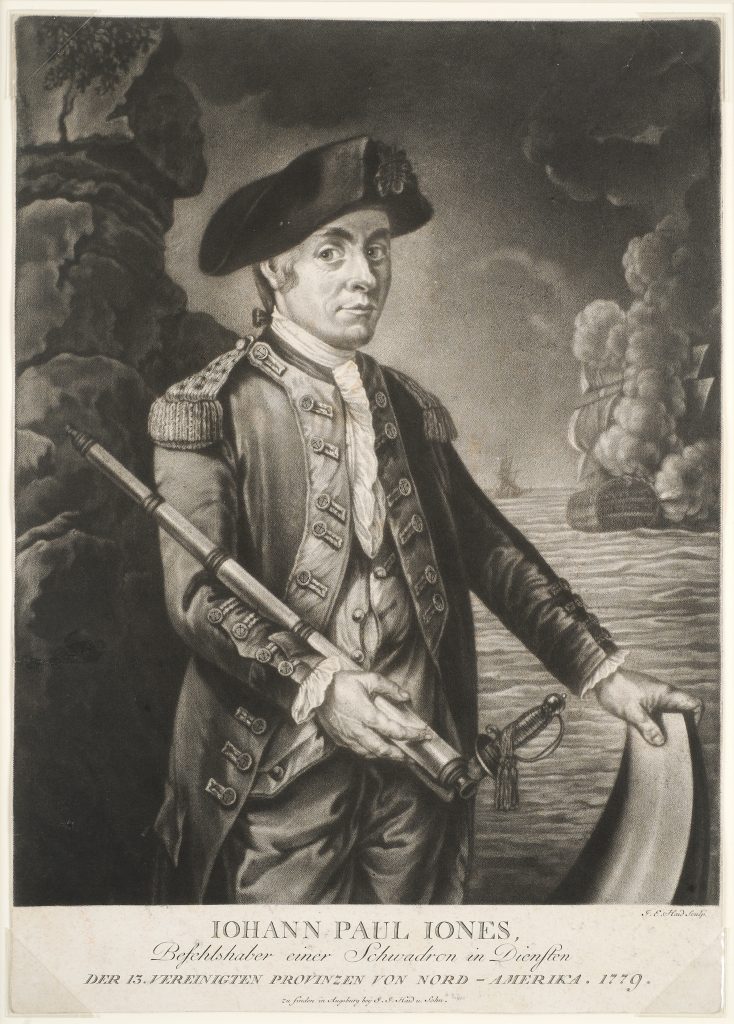
Johann Paul Jones. Befehlshaber einer Schwadron in Diensten Der 13. Verinigten Provinzen von Nord-Amerika. 1779
Johann Elias Haid, engraver
Augsburg: J.J. Haid & Son., ca. 1780The Robert Charles Lawrence Fergusson Collection
In translation, the inscription reads “John Paul Jones, Commander of a Squadron in the Service of the 13 United Provinces of North America, 1779.”
![Click for a larger view. [John Paul Jones]. Proof before inscription. [Attributed to Richard Brookshaw and printed by him in Amsterdam, ca. October 1779], British Museum](https://www.americanrevolutioninstitute.org/wp-content/uploads/2018/11/1.-John-Paul-Jones-Engraved-by-Richard-Brookshaw-proof-before-lettering-1779-British-Museum-738x1024.jpg)
![Click for a larger view. John Paul Jones. Commander of a Squadron in the Service of the Thirteen United States of North American, 1779. [Attributed to Richard Brookshaw and printed by him in Amsterdam, ca. October 1779], British Museum.](https://www.americanrevolutioninstitute.org/wp-content/uploads/2018/11/2.-John-Paul-Jones-engraving-by-Richard-Brookshaw-1779-British-Museum-725x1024.jpg)
